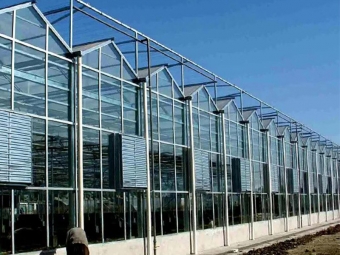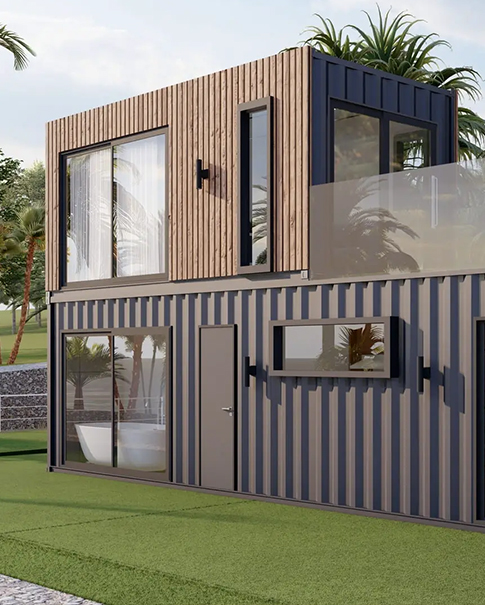Material composition of glass greenhouses
Glass greenhouses play an important role in modern agriculture. Their superior light transmittance and durability make them the first choice for growers. Let's take a look at the material composition of glass greenhouses.

Skeleton structure
The skeleton structure of the greenhouse is its support system, which is usually made of hot-dip galvanized steel. This material is not only strong and durable, but also effectively prevents corrosion, ensuring the service life of the greenhouse. Among them, the main frame generally uses 1001003.0 or 1201203.5 hot-dip galvanized pipes. These specifications of steel can provide sufficient strength to withstand various external loads.
Covering material
The choice of covering material has a direct impact on the performance and function of the greenhouse. The top cover usually uses double-layer insulating glass. Common specifications are 4+9+4, 5+6+5, 5+9+5, and the thickness is generally 5mm and 4mm. These double-layer insulating glasses have good thermal insulation effect and can reduce heat loss. In terms of materials, there are two options: ordinary white glass and ultra-white glass. Ultra-white glass has a higher light transmittance and is more suitable for the growth of plants that require sufficient light. The choice of surrounding covering materials varies from region to region. Due to the cold winter in the northern region, hollow glass is often used to enhance the thermal insulation effect, while single-layer glass can be used in the southern region to reduce costs and construction difficulties.
Other materials
In addition to the skeleton structure and covering materials, glass single-span greenhouses also require a variety of other materials to improve their functions. Aluminum alloy structures are often used to fix glass. For example, the top uses aluminum alloy herringbone beams to clamp the glass, which is both beautiful and firm. The ventilation system is an indispensable part of the greenhouse, including top ventilation windows and side ventilation windows, which are electrically controlled and equipped with insect-proof nets to ensure indoor air circulation and prevent pests from invading. The shading system is divided into external shading and internal shading. The external shading system uses hot-dip galvanized steel and black polyester shading nets, which can effectively block strong sunlight. The internal shading system uses aluminum foil shading nets, which can further adjust the indoor light intensity. Due to the cold winter in the northern region, a heating system, such as hot water pipes or hot air furnaces, is required to ensure that the indoor temperature is suitable for plant growth. A cooling system is also essential. In summer, a wet curtain fan system can be used to reduce the indoor temperature and provide a comfortable growth environment for plants. The power distribution system includes electrical facilities such as lighting, control boxes, and cables to provide power guarantee for various operations in the greenhouse. Foundation and civil engineering are also important links in greenhouse construction. The foundation needs to be processed according to local geological conditions to ensure the stability of the greenhouse and avoid structural deformation or collapse caused by unstable foundations.
These materials work together to form a glass greenhouse, which has excellent thermal insulation performance, light transmission effect and durability, providing reliable guarantee for modern agricultural production.

